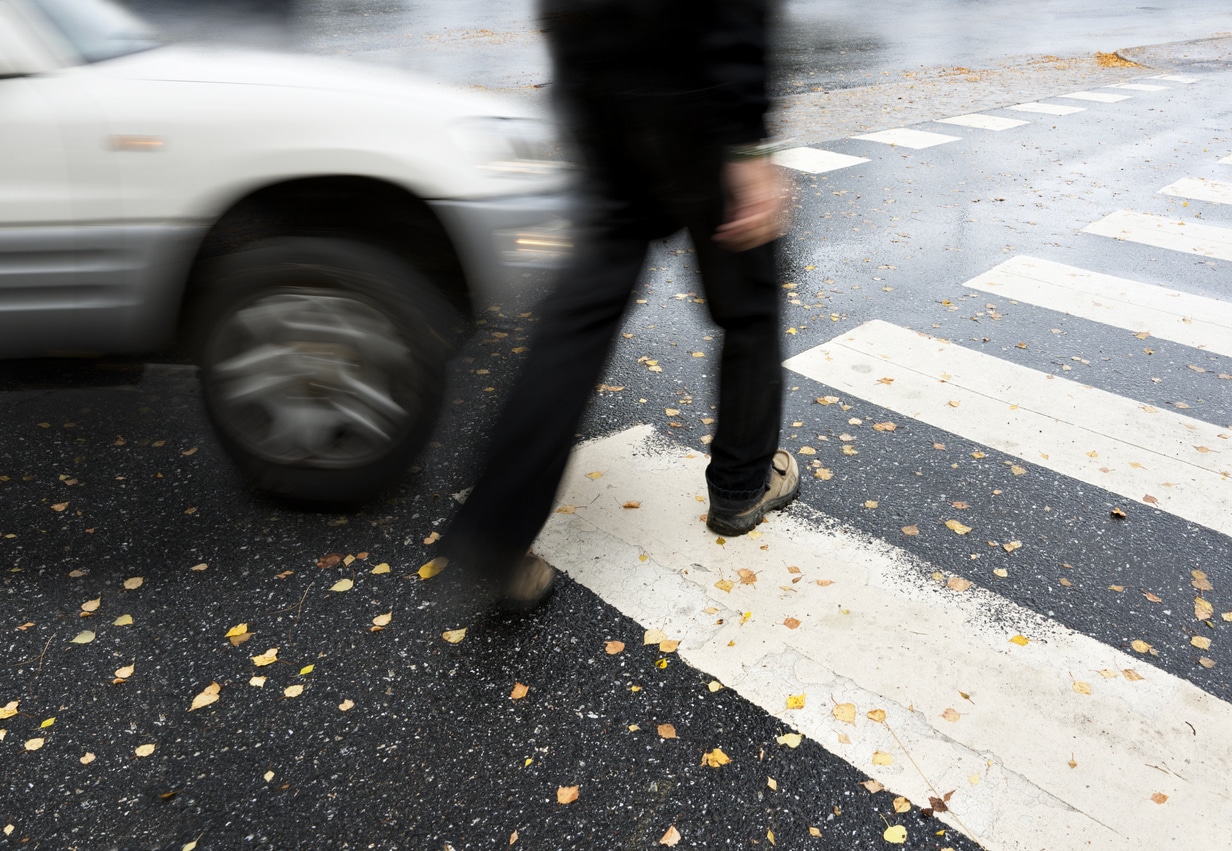Unfortunately, too many pedestrians are injured or killed by motor vehicles in South Carolina. South Carolina consistently has among the highest pedestrian fatality rates in the country. In 2020, South Carolina had the second highest pedestrian fatality rate in the country. See https://www-fars.nhtsa.dot.gov/states/statespedestrians.aspx. Our firm frequently represents pedestrians or the families of pedestrians, who are injured or killed by vehicles. Attorney Raymond Wooten won the most recent appellant case in South Carolina involving a question of liability for a wreck involving a pedestrian. See Abdelgheny v. Moody, 852 S.E.2d 225 (S.C. App. 2020).
All too often, the pedestrian is blamed for a wreck that is not their fault. This happens because when a car, truck, or SUV hits a pedestrian, the pedestrian is probably going to be hurt very badly, while the driver of the vehicle will probably be unhurt or suffer only minor injuries . While the pedestrian is being loaded in an ambulance and taken to the emergency room, the driver of the other vehicle will probably be at the scene telling their version of what happened to the investigating officer.
Unlike the driver of a vehicle who is surrounded by thousands of pounds of metal and plastic, a pedestrian does not have anything to protect them in the crash. The size and weight of a vehicle not only protects its driver, but it also increases the likelihood that the pedestrian is going to be badly injured. As we will explain below, while pedestrians are supposed to cross at crosswalks if available, determining who is at fault in a wreck involving a pedestrian is not as simple as finding out whether they pedestrian was in a crosswalk. The law requires drivers to keep a proper lookout and exercise due care to avoid hitting pedestrians even if the pedestrian is not in a cross walk.
Where Should Pedestrians Walk in South Carolina?
When crossing a road, a pedestrian is required to use a crosswalk if available. A pedestrian walking along a roadway is required to use a sidewalk if it’s available. If there is no sidewalk, then the pedestrian should walk on the shoulder of the road, and if there is no shoulder, then the pedestrian should walk along the outside edge of the road. See S.C. Code Ann. § 56-5-3160.
Pedestrian vs Vehicles: Who Has the Right of Way?
Whether a vehicle or a pedestrian has the right of way depends on where the pedestrian is on the road. While there are some exceptions, a pedestrian generally has the right of way if they are crossing the road in a crosswalk, and car generally has the right of way outside of a crosswalk. See S.C. Code Ann. § 56-5-3130, § 56-5-3150, and § 56-5-3160. Of course, as anyone who has waited to cross at a crosswalk while cars whizz by knows, drivers normally ignore this law and do not stop for pedestrians. Similarly, pedestrians often cross outside of crosswalks because of a lack of a crosswalk, or because of convenience.
Pedestrian vs Vehicle Accident: Who is at Fault?
S.C. Code Ann. § 56-5-3150(a) requires pedestrians to use crosswalks if available. If a pedestrian crosses the street outside of a crosswalk, drivers have the right of way and the pedestrian should yield for oncoming traffic. See S.C. Code Ann. § 56-5-3150. Even though drivers have the right of way when a pedestrian is crossing outside of a crosswalk, drivers still have a duty to avoid hitting them. See S.C. Code Ann. § 56-5-3230. The fact that a driver may have the right of way over a pedestrian does not mean that a driver can hit the pedestrian. See Lester v. McFaddon, 288 F. Supp. 735, 741 (D.S.C. 1968); see also Johnson v. Finney, 246 S.C. 366, 375, 143 S.E.2d 722, 727 (S.C. 1965).
If a pedestrian is hit outside of a crosswalk, there is a good chance that they will be marked at fault for the wreck, even if the driver was not paying attention and should have avoided the pedestrian. Luckily, the investigating officer’s decision as to who was at fault for an accident is not binding and the wreck report is not admissible at trial. See S.C. Code Ann. § 56-5-1290. This means that if you or a loved one was hit by a car, you may still be able to recover even if the you were marked at fault by the investigating officer.
Proper Lookout Requirements in South Carolina
Pedestrians are much smaller than a vehicle, and can be harder for a driver to see. Drivers are all too often distracted and not paying adequate attention while they are driving, and this has devastating results for pedestrians. In South Carolina, a driver has a duty to keep a proper lookout and see what is there to be seen. See Crosby v. Sawyer, 291 S.C. 474, 476, 354 S.E.2d 387, 388 (S.C. 1987).
Further, “every driver of a vehicle shall exercise due care to avoid colliding with any pedestrian or any person propelling a human-powered vehicle and shall give an audible signal when necessary and shall exercise proper precaution upon observing any child or any obviously confused, incapacitated or intoxicated person.” S.C. Code Ann. § 56-5-3230. This means that a driver must keep a proper lookout and avoid hitting pedestrians, and the driver must be especially careful if there is a pedestrian, such as a child, who may be more likely to walk in front of traffic. After a wreck, the driver will often say something along the lines of “I was looking, but just didn’t see them.” Simply saying you were looking is not enough- a driver has a duty to see what is there to be seen.
Accidents involving pedestrians often occur when the conditions make it difficult to see. From rain, to darkness, to the sun in a driver’s eyes, the conditions can greatly affect a driver’s ability to see a pedestrian. If conditions make it harder for a driver to see, then the driver is required to drive at a safe speed for the conditions. See Burgess Brogdon, Inc. v. Lake, 288 S.C. 16, 19, 339 S.E.2d 507, 509 (S.C. 1986). For example, if it is dark and raining, then a driver needs to drive slower than they would on a sunny day so that they can slow down or stop if there is a pedestrian in the road. If a driver is approaching an intersection and the sun is in their eyes, then they need to drive slow enough so that they can stop within the distance they can see. The fact that a driver is driving at or below the speed limit does not excuse them from driving faster than the conditions allow.
We have successfully recovered for pedestrians injured in accidents, even when they were marked at fault by law enforcement and even when the insurance company refused to accept liability. If this has happened to you or your loved one, please give us a call at (864)343-2222 as we may be able to help you recover.

